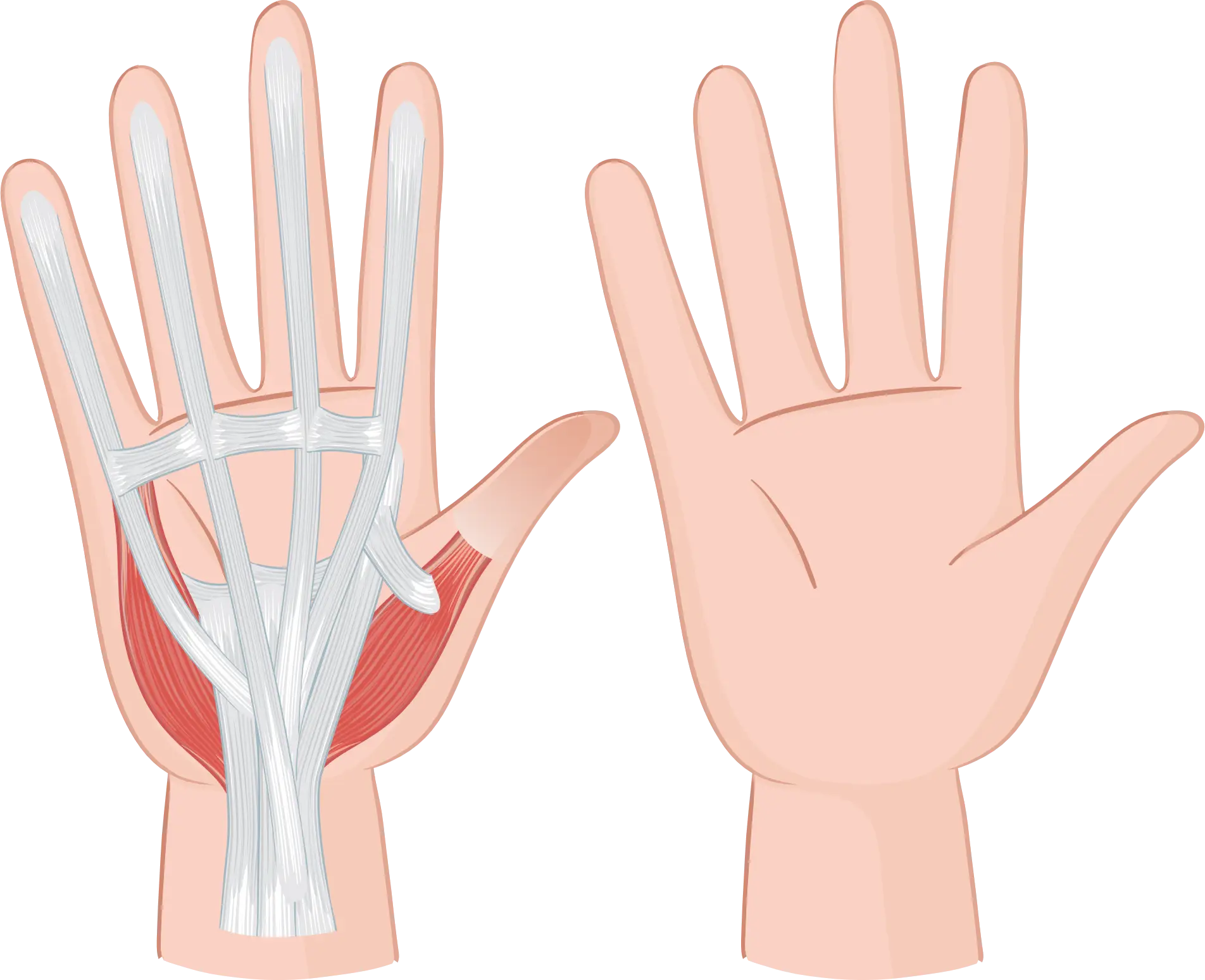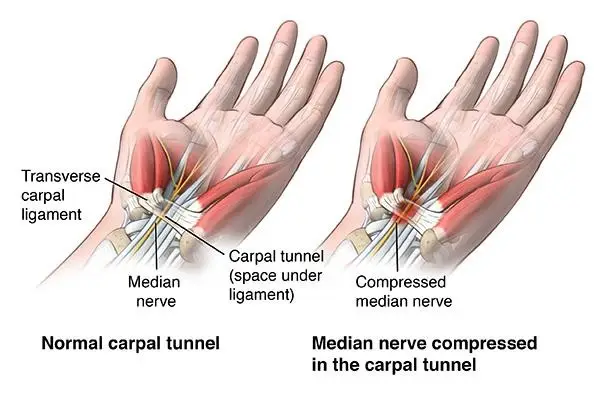Carpal Tunnel Syndrome (CTS)
What is carpal tunnel syndrome?
Carpal Tunnel Syndrome (CTS) is a frequent condition involving nerve compression in the wrist.
People who develop carpal tunnel syndrome often notice symptoms in their daily activities, especially those
involving repetitive hand movements.
Possible Causes
It occurs when the median nerve, which runs through a narrow passage called the carpal
tunnel on the palm side of the wrist, becomes squeezed or irritated. This pressure
leads to symptoms such as numbness, tingling, and weakness, especially in the thumb, index, middle, and part of the
ring finger.
Risk Factors
Several factors can contribute to this condition, including wrist anatomy, repetitive hand
movements, and underlying health issues like diabetes, rheumatoid arthritis, or
thyroid disorders. Early identification and treatment are essential to relieve symptoms and prevent carpal tunnel
syndrome from long-term damage.
Common Symptoms
- A “pins and needles” feeling in your fingers, especially when waking up
- Your fingers or hand feel numb or weak
- Tingling sensations in the affected areas
- Difficulty holding or controlling objects, such as a phone, steering wheel, pen, or keyboard
These are typical carpal tunnel syndrome symptoms to watch for, especially if they get worse over time.
Quick Facts
- Very common in women – about 3 times more than men
- One of the most common hand surgeries done worldwide
- If ignored, symptoms can get worse over time
- It often shows up during pregnancy, and may return later in life
- Non-surgical treatments like wrist splints and activity changes often help in early stages
How to diagnose carpal tunnel syndrome?
To diagnose carpal tunnel syndrome, your doctor will start by asking about your symptoms and medical history. A
physical examination of your hand and wrist will also be done.
Tests that may be used include:
- Electrophysiological tests: To evaluate if there is too much pressure on your median nerve.
- Nerve conduction studies (NCS)
- Electromyogram (EMG)
- X-ray: Helps rule out other problems like bone or joint issues.
- Ultrasound: Uses sound waves to check for swelling or pressure on the nerve in your wrist.
- MRI: Shows clear images of the soft tissues in your wrist to help find any damage.
What is the treatment for carpal tunnel syndrome?
Carpal tunnel syndrome can be treated using both surgical and non-surgical methods. Your doctor will recommend
options to best manage carpal tunnel syndrome according to your symptoms and lifestyle.
Non-Surgical Treatments
- Wrist Splinting: Wearing a wrist splint at night can help alleviate pressure on the median nerve by keeping your hand and wrist in a neutral position.
- Activity Modifications: Limiting or avoiding repetitive hand and wrist movements that involve prolonged flexing or extending can reduce strain.
- Corticosteroid Injections: Steroid injections into the carpal tunnel can reduce inflammation, providing relief from pain and flare-ups of symptoms.
- Hand Exercises: Specific exercises may help treat carpal tunnel syndrome symptoms in certain individuals.
Carpal Tunnel Syndrome Surgery
- Open Carpal Tunnel Release: During this carpal tunnel release surgery, a small incision is made in the wrist, through which the surgeon cuts the transverse carpal ligament to relieve pressure on the median nerve.
- Endoscopic Carpal Tunnel Release: This minimally invasive procedure involves a small wrist incision. An endoscope (a thin tube with a camera) is inserted to visualize the inside of the wrist, allowing the surgeon to cut the transverse carpal ligament with precision, similar to the open release.
Both forms of carpal tunnel surgery can provide long-term relief if non-surgical methods are not effective.
Carpal Tunnel Syndrome Treatment in Batu Pahat
See our healthcare professional if you have symptoms of carpal tunnel syndrome that interfere with your usual
activities and sleep patterns. Permanent nerve and muscle damage can occur without treatment.





